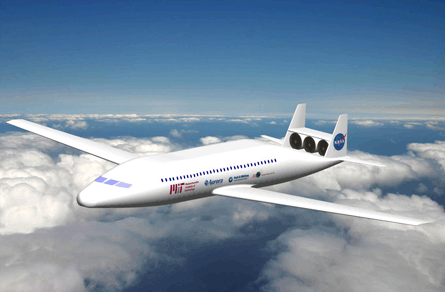Here is the first image of what one leading aircraft design boffin reckons to be the shape of things to come.
While the artist's unswept wing ultra-efficient aircraft concept may very well have no bearing on any final design, it is based on some preliminary thoughts by US aerodynamicist and human-powered vehicle expert Prof Mark Drela from Massachussets Institute of Technology.
His vision could eventually become a reality as part of NASA's multi-million dollar initiative launched late last year to fund the brainstorming efforts of US researchers to come up with pioneering aircraft concepts that could be flying by 2030.
NASA has awarded a suite of 18-month study research contracts worth $12.6 million that will be split between six industry teams to study advanced concepts for subsonic and supersonic commercial aircraft with novel airframe and propulsion systems.
 |
|---|
© MIT/NASA |
Each team has been briefed to come up with ideas that would deliver new aircraft types that could enter service in 25-30 years' time and which could overcome significant performance and environmental challenges.
NASA's Aeronautics Research Mission Directorate is terming this research and development generation N+3 - that is, three generations beyond the design platform of the contemporary commercial transport fleet.
"Industry will be challenged to introduce these new technologies without impairing the convenience, safety and security of commercial air transport. We're excited about the possibilities these six teams can imagine," says Juan Alonso, director of NASA's Fundamental Aeronautics Programme.
The studies constitute the first phase of a two-phase acquisition involving a competitive down-selection process. Participants who successfully complete the first phase will be asked to submit proposals for Phase 2, which will provide additional funds for initial research on the enabling technologies already identified.
The Aircraft and Technology Concepts for an N+3 Subsonic Transport programme will involve Aerodyne Research, Aurora Flight Sciences, Boeing Phantom Works, Massachusetts Institute of Technology and Pratt & Whitney.
Source: Flight International
















